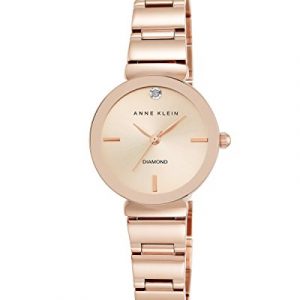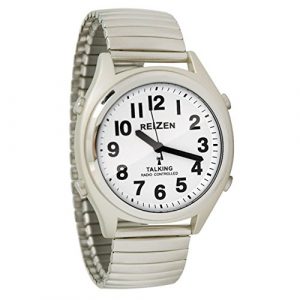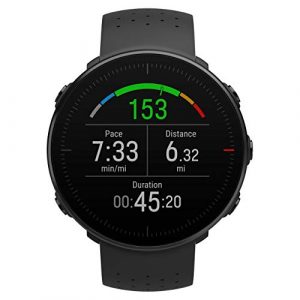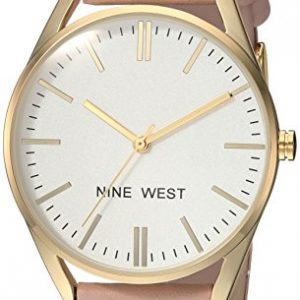There are many fashion accessories that can be worn by both men and women. But any list that didn’t include wrist watches would be sorely lacking without including wrist watches. They were initially used as a piece for keeping time but in the modern day they have evolved into much more than that. They are now a fashion piece which has become almost a necessity in our modern era. To a great extent they have become a symbol for status and are worn for a variety of of purposes today.
To begin with the wrist watches of today are inherently accurate and convenient. Some people purchase watches for their precision with technical aspect, to measure time in milliseconds, but most people purchase a specific watch simply because it is aesthetically pleasing. There are many people who pay thousands or hundreds-of-thousands to buy a specific watch that is “just what they are looking for”.
As far as historical records go back, the year 1868 was the first year the modern day wrist watch was born and Phillippe Patek was the inventor. Women’s wrist watches were part of a fashion ensemble whereas men used to keep pocket watches. This continued until World War I. It was around this time that soldiers realized that having a watch on the wrist was a more convenient way of telling time than carrying it in the pocket.
The type of wrist watches made today were first created by Louis Cartier. He had created a watch for Santos Dumont, a flying hero. This occurred around 1911 and this is when it was first purchased. This category of watch occurred then and this turned into the blueprint for our modern wrist watches.
The shape of the dial began to modify from the classic round shape. More brands began to evolve, apart from the classic Cartier wrist watch. The “polyplan” design was made by Movado, while the rectangle shape was released by Patek Phillippe. This design received much fame and recognition.
Several design styles came about around 1913. Some models got their inspirations from armored cars and includes “Gondola” created by Patek Phillippe and “Tank” launched by Louis Cartier. Watches came available with advanced features including the ability to keep track of lunar phases, days, and months.
When it comes to the names of watches the name of Rolex cannot be ignored. Rolex made its mark in the wrist watch market in the 1920s. The first Rolex was the very sophisticated and elegant Rolex Prince which also included a dual time feature. The second hand was larger than the minute hand. This quality gathered much attention.
As history shows watches are continually evolving. It used to be that all watches were analog but with the explosion of digital wrist watches around the 1980s, one can see that watches have been constantly changing and will continue in this way throughout the foreseeable future. To shop mabawatches watches simply click the link




Tired of the usual wristwatches you have to wear every day when you go to the office? Tired of the everyday look of your wristwatches and are you sad because you can’t do anything with it but see the time? Well, even the most expensive wristwatches can show you the days of the week at the most.
Yes, you want to do a lot with your wristwatch and that is very understandable. So, what do you do when you get hours doing a lot more than just giving time?
Yes, you can have hours that tell more than just time, and you can do a lot from MabaWatches.com.
The era of smartwatches
Smartwatches from MabaWatches.com are a revolution in the world of wristwatches. If you have a touch watch, it will regularly check your watch every time your phone receives an SMS or a call. There is a longer battery life than any other touch screen device you own, and of course, the comfort in your life will improve dramatically. Touch screen watches provide many benefits and can be very gentle when you wear them. This increases the style quotient by a few degrees and makes the wearer look cooler. Let’s examine some of the features of mabawatches.com smartwatches and what makes them special.
Usability features have been added
Since you can now “touch” it to make it work, it’s very easy to play around with detailed options, such as choosing your song, reading text, or turning up the volume thanks to MabaWatches.com.
The ability to synchronize with other devices
Yes, synchronize important information with your other electronic devices, including tablets and other smartphones. What’s more, iOS and Android are mainly touchscreen operating systems. It is used mostly on phones with touch screens and works better when used on it. So, if the more advanced OS is to be used for small portable devices like the clock, it has to be a touch watch. It also helps to synchronize the watch with other devices that use the same OS thus data sharing can be made much easier and faster.
Comfort has been added
The added convenience this watch provides isn’t limited to the fact that you don’t have to press physical buttons to do things on it. The fact that so many apps can now be used on your watch is a very convenient factor. For example, if you are a sports person, the biggest sob imaginable from MabaWatches.com is not having to hold your phone to listen to songs or check your running speed.




Tired of the usual wristwatches you have to wear every day when you go to the office? Tired of the everyday look of your wristwatches and are you sad because you can’t do anything with it but see the time? Well, even the most expensive wristwatches can show you the days of the week at the most.
Yes, you want to do a lot with your wristwatch and that is very understandable. So, what do you do when you get hours doing a lot more than just giving time?
Yes, you can have hours that tell more than just time, and you can do a lot from MabaWatches.com.
The era of smartwatches
Smartwatches from MabaWatches.com are a revolution in the world of wristwatches. If you have a touch watch, it will regularly check your watch every time your phone receives an SMS or a call. There is a longer battery life than any other touch screen device you own, and of course, the comfort in your life will improve dramatically. Touch screen watches provide many benefits and can be very gentle when you wear them. This increases the style quotient by a few degrees and makes the wearer look cooler. Let’s examine some of the features of mabawatches.com smartwatches and what makes them special.
Usability features have been added
Since you can now “touch” it to make it work, it’s very easy to play around with detailed options, such as choosing your song, reading text, or turning up the volume thanks to MabaWatches.com.
The ability to synchronize with other devices
Yes, synchronize important information with your other electronic devices, including tablets and other smartphones. What’s more, iOS and Android are mainly touchscreen operating systems. It is used mostly on phones with touch screens and works better when used on it. So, if the more advanced OS is to be used for small portable devices like the clock, it has to be a touch watch. It also helps to synchronize the watch with other devices that use the same OS thus data sharing can be made much easier and faster.
Comfort has been added
The added convenience this watch provides isn’t limited to the fact that you don’t have to press physical buttons to do things on it. The fact that so many apps can now be used on your watch is a very convenient factor. For example, if you are a sports person, the biggest sob imaginable from MabaWatches.com is not having to hold your phone to listen to songs or check your running speed.




Tired of the usual wristwatches you have to wear every day when you go to the office? Tired of the everyday look of your wristwatches and are you sad because you can’t do anything with it but see the time? Well, even the most expensive wristwatches can show you the days of the week at the most.
Yes, you want to do a lot with your wristwatch and that is very understandable. So, what do you do when you get hours doing a lot more than just giving time?
Yes, you can have hours that tell more than just time, and you can do a lot from MabaWatches.com.
The era of smartwatches
Smartwatches from MabaWatches.com are a revolution in the world of wristwatches. If you have a touch watch, it will regularly check your watch every time your phone receives an SMS or a call. There is a longer battery life than any other touch screen device you own, and of course, the comfort in your life will improve dramatically. Touch screen watches provide many benefits and can be very gentle when you wear them. This increases the style quotient by a few degrees and makes the wearer look cooler. Let’s examine some of the features of mabawatches.com smartwatches and what makes them special.
Usability features have been added
Since you can now “touch” it to make it work, it’s very easy to play around with detailed options, such as choosing your song, reading text, or turning up the volume thanks to MabaWatches.com.
The ability to synchronize with other devices
Yes, synchronize important information with your other electronic devices, including tablets and other smartphones. What’s more, iOS and Android are mainly touchscreen operating systems. It is used mostly on phones with touch screens and works better when used on it. So, if the more advanced OS is to be used for small portable devices like the clock, it has to be a touch watch. It also helps to synchronize the watch with other devices that use the same OS thus data sharing can be made much easier and faster.
Comfort has been added
The added convenience this watch provides isn’t limited to the fact that you don’t have to press physical buttons to do things on it. The fact that so many apps can now be used on your watch is a very convenient factor. For example, if you are a sports person, the biggest sob imaginable from MabaWatches.com is not having to hold your phone to listen to songs or check your running speed.